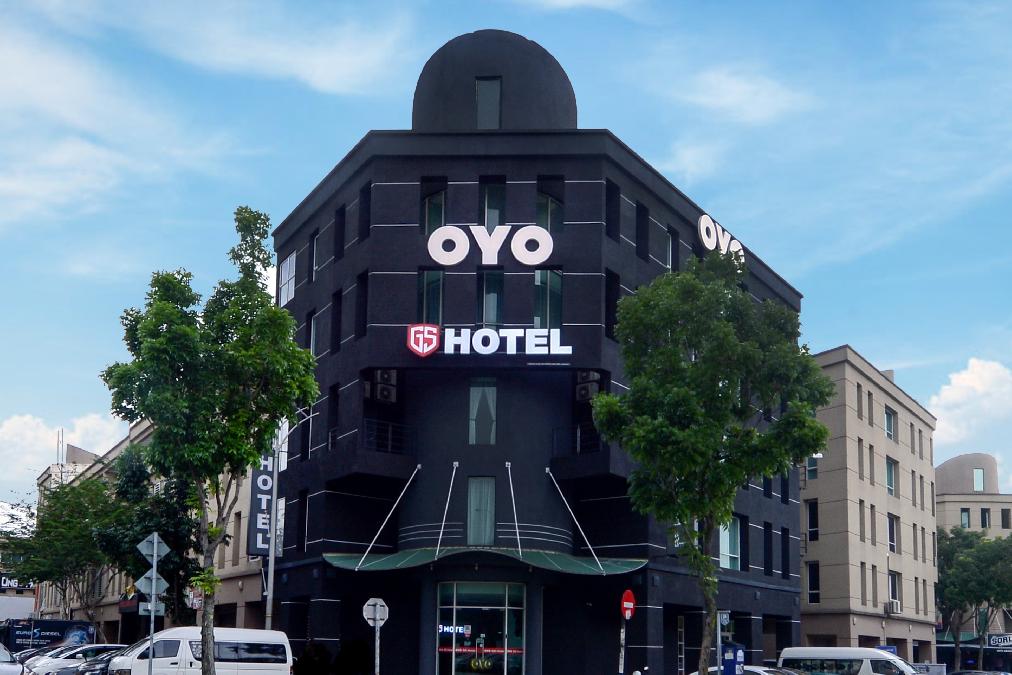The Sabah secondary market has experienced a price drop of around 10-15% according to Victor Wong - MIEA Chairman (Sabah), saying, "When the market is softer it is a buyer's market. People looking to buy may enjoy the benefits.â€. As for the primary market, he sees that developers are now very cautious when it comes to pricing their units with many trying to slot into the notorious "affordable†category. The thing is, there is no clear definition of "affordableâ€.
A Buyer's Market
"For me affordable is RM400,000 or RM350,000 below for new properties" says Victor. Plenty would argue and debate the interpretation of the term but it varies from place to place, state to state. "What is affordable in Kuala Lumpur, isn't affordable in Gua Musang" says Siva who encourages developers, especially government housing initiatives to conduct proper studies and find out what the people want before putting shovel to sand and creating properties that are not suitable for the market.
Such is the uncertainty in the property-sphere: although people are trying to offload their units and pricing them cheaper, home buyers are still finding it hard to buy. Affordability is subject to approval. If you can't get the loan, you can't afford it. Now that banks are holding a firm stance with stricter policy when it comes to lending, people should be heedful of what they are spending on and mindful of getting loan approvals at the end of the day. Siva wants the banks to be a bit more positive on lending but believes people should be a little more prudent and forward thinking with their spending – which is always good advice.
COMMERCIAL
When it comes to property investment, the number of investors choosing to invest in strata office investment, let alone commercial property, is too few and far between. Understandably, very few strata offices are available in the market today, leaving most investors less exposed to commercial property investments. Moreover, the perceived sizable investments involved with such investments serve as a deterrent, rendering commercial office investment out of reach for most people.
The golden question on everyone's mind – Is now the right time for commercial property investments? Traditionally, commercial property has always been considered the most fundamental investment. It is the preferred choice of big businesses and governments alike.
Meanwhile, local and regional developers typically choose to retain ownership of their own products and commercial spaces (for example, malls and office buildings) and sell residential elements. This leaves limited opportunity for individuals to own commercial space. Commercial property is simply not traded as openly or within the reach of the individual investor.
Commercial occupier markets were buoyed in 2017 by higher than expected economic growth in the Asia Pacific region. Office and logistics markets were especially strong in terms of activity, the former seeing growth in demand from co-working space and technology related companies, and the latter a spill over in demand from online retailing. Traditional retailing formats continued to be challenged in many markets due to the growth of e-commerce, with secondary retail especially under pressure to re-position and cater to new market realities.
In a survey conducted by Knight Frank Malaysia in 2017, it predicted that both office and retail markets will continue to be under pressure with rental and occupancy levels projected to dip amid widening gap between supply and demand. The hotel/leisure sub-sector remained resilient while the healthcare/institutional and logistic/industrial gather their paces in 2017.
Kuala Lumpur remains the top choice for commercial investment and development with 29% of responses conducted in the survey. This is followed by Selangor (23%), Johor (20%), Penang (17%) and Sabah (11%).
However, when compared to 2016, it is noted that the respondents' interests in the capital city have declined marginally for the years ahead. This may be attributed by the oversupply situation in certain sub-markets. More respondents are looking into diversifying their investments to upcoming hotspots such as Penang, Johor and Sabah.
According to NAPIC, there were 10,375 transactions worth RM11.99 billion recorded, down 11% in volume but value increased by 5.9% due to several major transactions recorded in the year involving shopping complexes, purpose-built offices and hotels. Market activity in most states recorded double-digit declines.
A recent data from NAPIC shows that occupancy rates for the retail sector in 1Q2017 recorded a decline to 85.1% for the whole of Sabah from 86% in H2 2016. This drop could be due to the increase in retail supply and the sluggish economy.
The total retail space in Kota Kinabalu currently stands at circa 5.65 million sqft with the addition of 74,666 sqft courtesy of the newly completed Jesselton Mall @ Jesselton Residences and approximately 65,000 sqft more from T1 Bundusan.
According to NAPIC and Knight Frank Research, Sabah registered 18 transactions with a total value of RM20.5 million in 1Q2017 for real estate in shopping malls. While volume of transactions declined by around 44% as compared to the preceding quarter (1Q2016), the value of transactions has increased slightly by approximately 5% as compared to RM19.5 million, recorded in 4Q2016.
SHAREDA's President, Mr Chew Sang Hai suggests that in 2018, the mall occupancy ratio would be better as there are no new supplies of completed commercial centres and shopping malls before year 2022.
"The retail sentiment would be better in 2018 due to good incentive to B40 and M40 which were presented during the 2018 Federal budget announcement" he further commented, adding that this encourages a better GPD Growth, further strengthening the nation's currency.
"I believe that all these will ultimately lead to higher infrastructure funds for Sabah and better investment sentiment after GE14" shares Mr Chew.
Overhang Crisis
The retail sub-sector recorded 5,829 transactions worth RM4.6 billion, dominating 56.2% of the commercial property transactions and 38.3% of the total value. The market performance, however, was soft with a decline of 10.5% in volume and 2.5% in value.
The shop unsold situation saw an improvement at the onset of improving business conditions. The shop overhang recorded 4,017 units worth RM2.61 billion, contracted by 20.8% in volume and 8.0% in value. Similarly, the unsold under construction and not constructed contracted to 6,815 units and 233 units, down by 1.1% and 67.4% respectively.
According to Bank Negara Malaysia, vacancy rates in the commercial office segment have risen steadily since 2015. Bank Negara Malaysia estimated that office vacancy rates could rise to 32% by 2021, from 24% in the first-quarter of 2017, considering large development projects such as Tun Razak Exchange and Bukit Bintang City Centre in Kuala Lumpur that are currently under construction.
In the retail shopping complex segment, total retail space per capita has increased sharply in key Malaysian states over the years, and now surpasses regional markets such as Hong Kong and Shanghai. The large incoming supply of retail space will exacerbate the oversupply situation and raise the vacancy rates across Kuala Lumpur, Penang and Johor from current levels of 13%-30%.
In the office and retail sectors, occupancy rate was above 80% but unoccupied space remained high, with 3.4 million square metres of unoccupied private office space.
Kuala Lumpur recorded the highest unoccupied space with more than 1.62 million square metres, followed by Selangor with 0.87 million square metres. Sabah stands at 0.077 million square metres of unoccupied space.
The retail sector recorded more than 2.79 million square metres of unoccupied space, reflecting an increase of 2.6% from the preceding half. Selangor and Penang Island recorded higher unoccupied space of more than 0.5 million square metres.
Since the last big commercial building boom 12 years ago, it can be said that the residential sector has been better at keeping up with emerging trends. For example, the SOHO/SOVO/small residential studio market really took off to cater to younger investors and first-time homeowners. As of writing this article, a handful of developers are looking into changing their existing residential titles to commercial titles, to entail the possibilities for homeowners to operate home sharing services. Airbnb, just like Uber, is currently a debatable hot topic in Sabah. Kota Kinabalu City Hall (DBKK) have confirmed that it is against the law for Sabah residents to lease their properties through Airbnb. However, City Hall are looking at ways to set guidelines for Airbnb to operate in the State and will firm up a regulation by mid-2018.
Looking into the future, it is clear that pent-up demand for long-overdue upgraded office spaces that meet the needs of the new Gen-Y and Millennial buyers is imminent. Strata office space caters to this new impending lifestyle for a future generation.
In times to come, there will be approximately 1.2 million sqft of retail space entering the market, according to Knight Frank Research. There is still concern on the "sustainability†of the retail sector in view of the high impending supply. With heightened competition, the retail sector is said to face more challenging phases and turnovers are expected to be diluted.
As 2018 shifts into full gear expect sentiments to change as the market begins to shape itself. For property investors in Sabah, it is a good time to look at what is on offer as the ball is now in your court to do as you please in a buyers' market. All parties will no doubt benefit by diving in deeper and fully understanding the needs of the market, be it from the private or government sectors. There is plenty of buzz surrounding 2018, let's hope it shapes up to be a productive – and lucrative – year for everyone.
Read part 1 of our Property Market Review and Outlook here.

.jpeg)







.jpeg)













